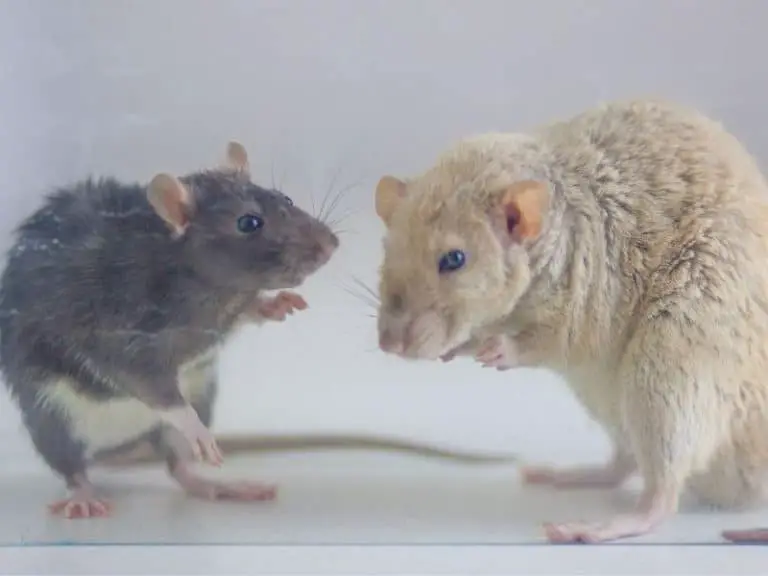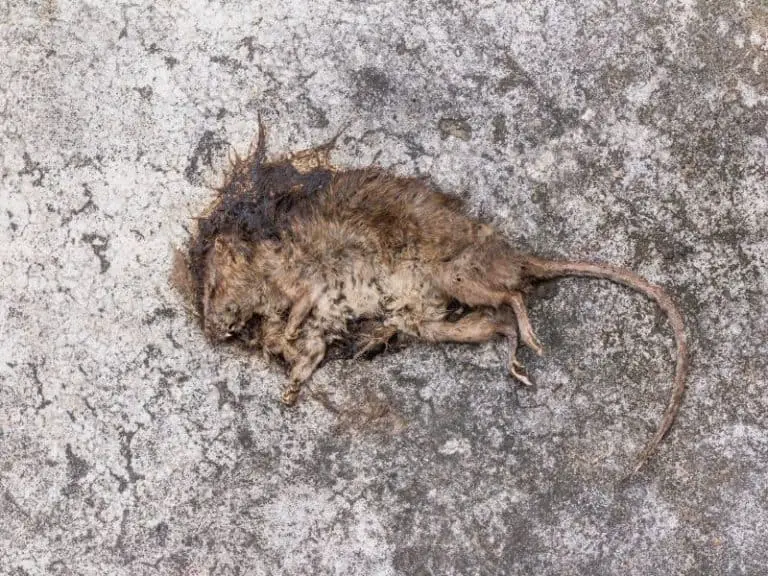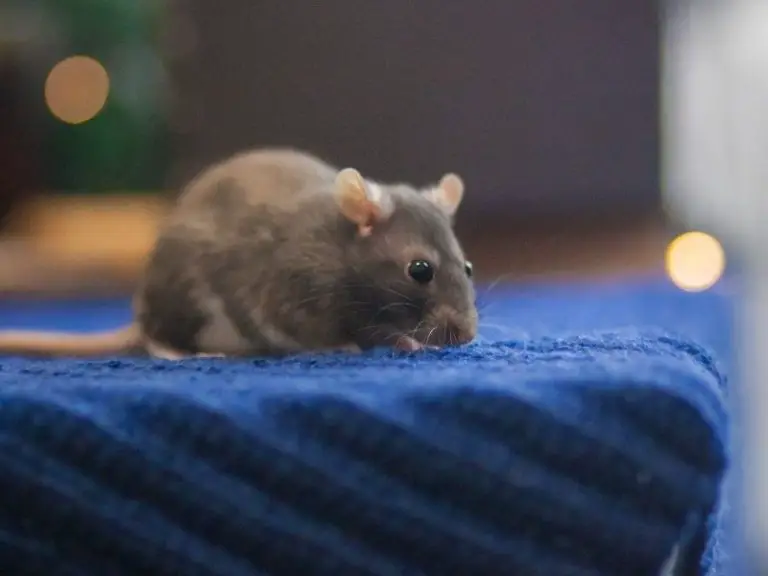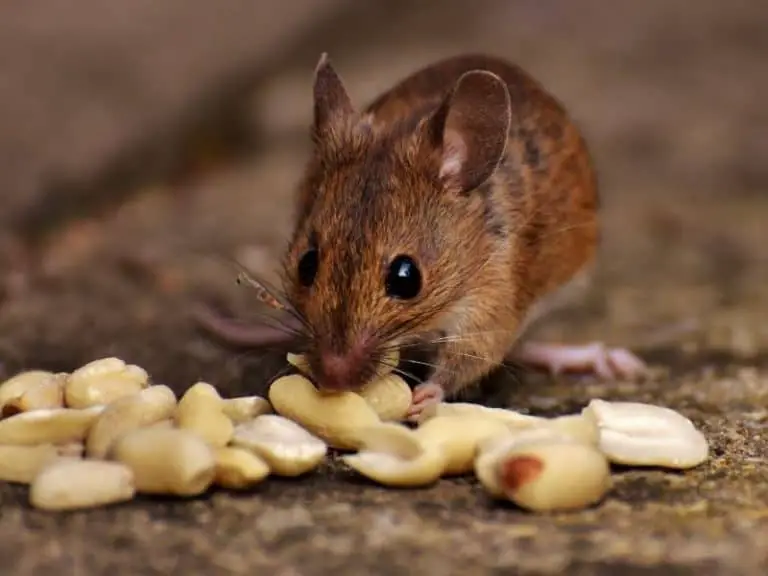Do Rats Eat Mice or Do They Get Along?
Many rodents are considered pests. Leading the list of some of the worst are rats and mice. And since I am a pest control technician many people ask me if it is possible to have both mice and rats in their houses.
Rats and mice may get along if plenty of food is available, but interaction is unlikely. They might feed in the same area, too. However, this rarely happens because rats tend to live outdoors while mice prefer to live indoors. If there is not enough food for everybody, rats may eat mice to survive.
Having either rats or mice in or around your home can make your everyday living a nightmarish experience.
Having both of them at the same time can easily send you into a panic, particularly each time you come across them.
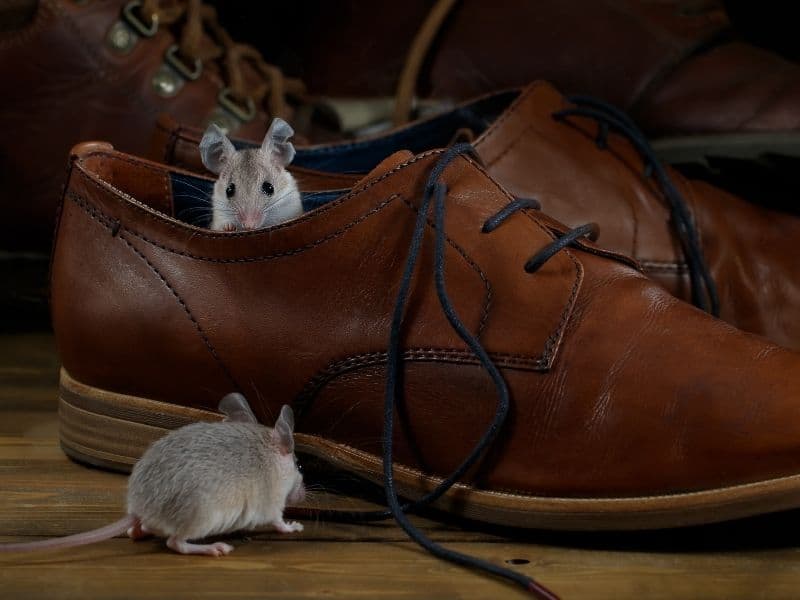
Rats and Mice are Very Common Pests
There are many household pests in the US. Some of the most common of the bunch are rats and mice. As a matter of fact, both types of rodents have plagued certain cities in the US for more than a century already.
Here are the top 10 US cities with the most reported rat and mouse sightings:
- Philadelphia
- Boston
- New York City
- Washington, DC
- Milwaukee
- Kansas City
- Cincinnati
- Portland
- Denver
- Memphis
Just because you do not live in any of the cities listed above doesn’t necessarily mean that you will not encounter or be bugged by rats and mice sooner or later.
Whether you are residing in the heart of the city or in a serene countryside, it is very much likely for these beady-eyed rodents to welcome themselves into your life.
The only known inhabitable place on the planet that is free of rats and mice is Alberta, Canada.
If encountering rats and mice is not an option and you are willing to start your life from scratch, you may consider packing your bags and moving to Alberta.
Otherwise, it’s a good idea to get to know rats and mice a little more. Knowing the enemies is the first step towards living in a rodent-free home.
Can you have mice and rats at the same time?
Having rats and mice at the same time is very much possible. In addition, they may nest in different areas of your property. Rats prefer to live outside, although they may get inside occasionally to look for food. On the other hand, mice prefer to live inside where they have easy access to food.
Knowing the way rats and mice look is important in determining whether you only have rats or mice, or both pests at the same time.
Well, below you will learn how to tell apart rats from mice (and vice versa).
Differences Between Rats and Mice
Many people are aware that rats are bigger than mice. Besides the size, they no longer have any more idea about the things that set rats and mice apart.
Especially if you fear that you have an ongoing infestation, it’s a must to determine whether rats or mice are the culprits to know what you have to deal with.
Rats and mice are different from one another in terms of physical appearance, diet and behavior. It is also possible to tell them apart by means of — believe it or not — the number and shape of their droppings.
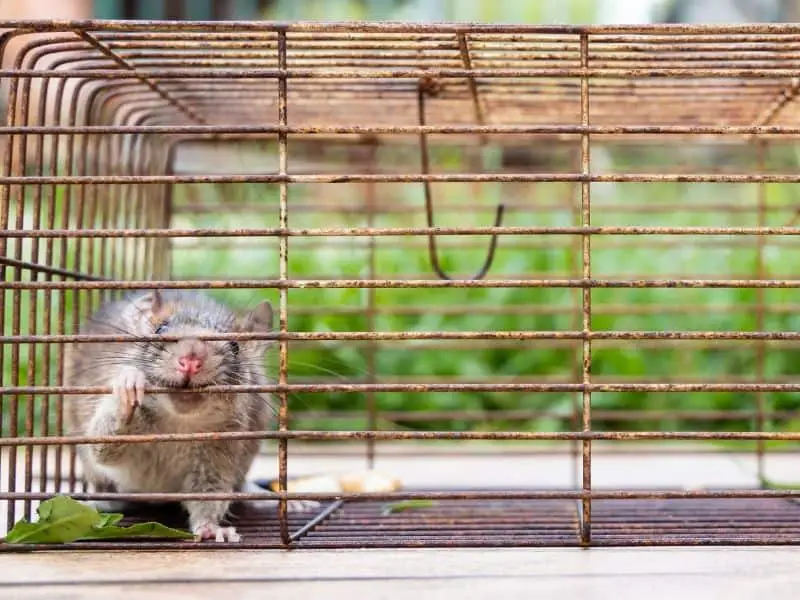
Rats Can Reach 15in In Size
Rats are larger than mice. They can grow up to 40 cm (15 in) in length or more. Rats have smaller ears than mice but have larger feet. Their tails are thick, scaly, and hairless, too. Rats have blunt noses. They have coarse fur, which can come in various colors such as black, brown, gray, and white.
The fur of rats is usually often dirty. It’s because of this why rats tend to leave behind greasy marks on surfaces. So, if you can spot mysterious stains on the floor or countertops, rats could be around.
Mice Grow Up to 4in (or 8in including tail)
Mice are smaller than rats. They can grow up to 10 centimeters in length. Some can be 20 centimeters long, including the tail. Mice have large, floppy and hairy ears. Their long and thin tails are covered with hair. Mice have pointed noses. Their soft fur can come in brown, gray and white colors.
Some people cannot tell apart a mouse from a young rat. To make sure that what you are looking at is a mouse and not a baby rat, take a look at the ears and tail — the ears should be big, and the tail should be longer than its body.
Rats Prefer To Live Outdoors
In the wild, rats eat seeds, grains, fruits and vegetables. They may also eat insects and small animals, but it’s rare since rats don’t like to hunt. Rats also eat many pantry foods, from oats, bread to dried fruits. It’s not uncommon for rats to eat pet food and foods in trash cans and dumpsters.
Rats prefer to live outdoors because that’s where they can find many of their preferred foods. However, if food outdoors is scarce, rats will look for food indoors. But it’s unlikely that they will nest indoors.
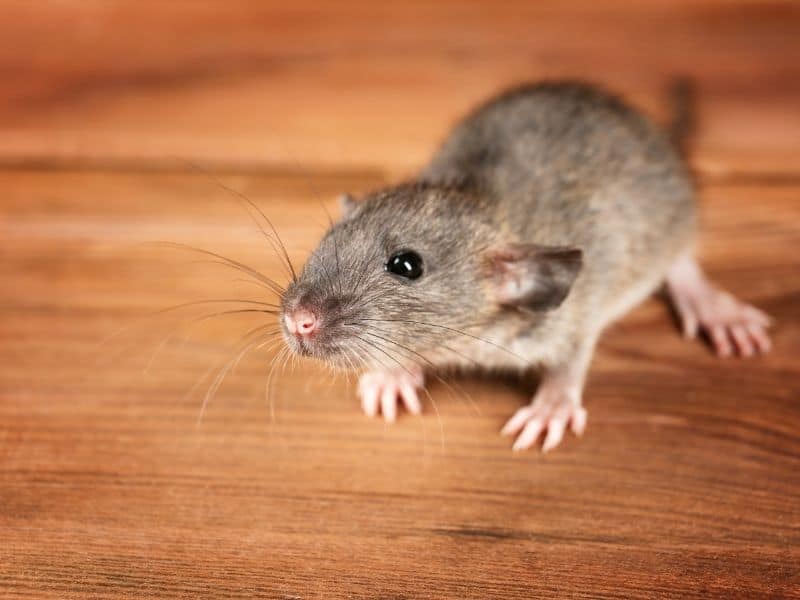
Mice Prefer To Live Indoors
Mice are omnivorous. It means that they eat both plant- and animal-based foods. However, mice prefer seeds, grains, fruits and veggies. They tend to look for food in the same place. Mice rarely drink water. In the wild, mice eat just about anything from plants, including the bark and roots of trees.
Contrary to popular belief, mice are not at all that crazy about cheese. As a matter of fact, they will only eat cheese if they happen to come across it or there’s nothing else to eat.
Rats Do not Like Exploring Area
Despite being bigger and looking scarier than mice, rats basically live in fear. They do not like exploring, which is why it can be hard to trap them. Rats can climb like mice. However, they prefer to stay near the ground. This is the reason why sewers are the ideal habitats for rats in urban areas.
Rats can take anywhere from seven weeks to three months to mature sexually. Female rats can give birth three to six times per year. Each litter can be composed of up to 10 baby rats.
Mice Are Bolder and More Curious
Mice are smaller than rats alright. Despite this, they are bolder and more curious. It’s due to this why mice love exploring, which is a good thing because it makes it easier to trap them. Being good climbers, mice can easily infest various parts of the home, including the ceiling and attic.
Mice can reach sexual maturity in two to three months. Female mice can give birth seven to eight times per year. Each litter can be made up of up to 16 little mice.
Rats and Mice Can Cohabitate
Rats and mice can cohabitate in the sense that they can infest the same home. However, they tend to nest in different areas. Rats and mice cannot make babies. Although they are both rodents, rats and mice are not the same. They cannot procreate. Also, rats and mice are not attracted to one another.
Worry not that having rats and mice at the same time will give rise to hybrid babies that can wreak havoc on your home and life twofold. They may cohabitate alright, but they won’t be able to produce babies.
In some instances, however, rats and mice do not get along. This is especially true when food is scarce. We will talk more about this matter in a few, so don’t stop reading now.
Both Rats or Mice Cause Damage To The Property
Rats and mice have long and sharp teeth, which allow these rodents to gnaw on just about anything that catches their fancy. It’s because of this why both rats and mice can cause significant damage to one’s home. However, the teeth of rats are much stronger, which enables them to gnaw on more things.
Having rats or mice around is a cause for concern. That’s because they can cause an assortment of damage to your home. What’s more, they can also put your property and your loved ones in great danger.
Some of the things that rats and mice love to gnaw on are electrical wires. It’s a complete no-no to allow these rodents to damage electrical wires as it may cause a fire.
Rats and mice can cause damage not only to your property but also to your various belongings, such as home appliances and devices.
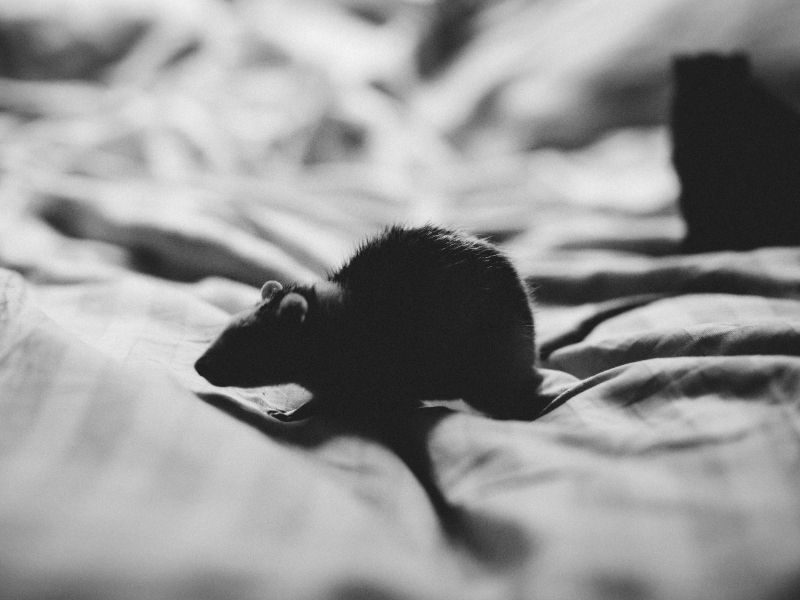
The teeth of rats are several times stronger than the teeth of mice. Due to this, they can access (and contaminate, too) many stored foods, including those in cans and other durable packaging types.
Both Rats and Mice Can Spread Diseases
Rats and mice are associated with a number of health risks. They can spread diseases in a number of ways. Humans can become infected by means of contact with their feces, urine or saliva (such as through rodent bites). Infection is also possible through the handling of live or dead rats and mice.
According to health authorities, rats and mice can spread more than 35 diseases.
Refrain from assuming that you can get a disease only from wild rats and mice.
Here’s a fact: you can also get a disease from pet rats and mice!
Some of the diseases that you can get from them include:
- Rat-bite fever. Rat-bite fever is caused by a type of bacteria that’s naturally present in the nose and mouth of rats. Up to 10% of rat bites can lead to rat-bite fever.
- Leptospirosis. There is a kind of bacteria that lives in the kidneys of rats and mice. Their urine can be infected by it, which can infect humans by coming into contact with the contaminated pee of rats and mice.
- Hantavirus Pulmonary Syndrome (HPS). Certain types of rats and mice can give humans HPS through contact with their infected droppings. About one-third of all HPS cases are fatal.
- Salmonellosis. Eating food contaminated with rat and mouse feces containing salmonella can cause this bacterial infection. It can be fatal in children, older people and those with weak immune systems.
- Tularemia. Also known as rabbit fever, humans can get tularemia from handling rats and mice suffering from the bacterial infection or have died because of it.
- Lymphocytic choriomeningitis (LCM). Pregnant women should avoid contact with mice to lower their risk of LCM, which can cause birth defects and intellectual disabilities in their babies.
- Plague. Plague is caused by a bacteria that you can get from rats and mice as well as fleas that have bitten infected rats and mice. Luckily, plague can be treated without trouble with a course of antibiotics.
- Monkeypox. The symptoms of monkeypox are similar to the symptoms of smallpox. Humans can get this viral infection from infected rats and mice. What’s more, they can spread it to other humans.
But because rats have much stronger teeth than mice, they can gnaw on more types of food packaging. As a result, they can contaminate more food products.
Consuming food containing the saliva of rats, which can be contaminated with harmful microorganisms, can put your health in danger.
Food products that rats gnaw on can also become contaminated with their droppings or urine, or the bacteria that they have on their dirty furry bodies.
Just a quick fact…
The droppings of rats are shaped like bananas or large grains of rice. Per day, a rat can produce 20 to 50 droppings. On the other hand, the droppings of mice are shaped like pellets with pointed ends. Despite having smaller droppings, a mouse can produce more droppings, amounting to 40 to 100 per day.
Do Rats and Mice Get Along?
Rats and mice can manage to exist with one another. They can look for food and also eat in the same places. However, they nest separately. Rats prefer to live outdoors. Mice, in contrast, choose to live indoors. Even though they can get along alright, rats and mice do not socialize with each other.
It’s not uncommon for a house to be infested with both rats and mice. While both types of rodents pretty much have the same diet, they don’t really fight over food. This is especially true if there’s plenty to eat.
However, it’s a different thing if there is food scarcity. As mentioned earlier, rats are not fond of hunting.
They will settle for just about anything that they will come across, provided that it is edible. This is why rats do not mind feasting on food in trash cans and dumpsters — rats don’t have a fussy diet plan.
Rats that are desperately hungry will eat small animals that they run into. They will also eat large animals, provided that they are dead and cannot defend themselves.
Do Rats Eat Mice?
Rats eat mice if there is nothing else to eat. Because rats are omnivores, they don’t mind eating animals if plant-based foods such as seeds, grains, fruits and vegetables are not available. Mice are last-resort foods for rats.
Many people are disgusted with rats. What’s even more revolting about these pawed creatures is the fact that rats can eat mice, whether live or dead. It also doesn’t matter if mice are adults or babies.
Refrain from thinking that rats eat mice simply because they are disgusting creatures.
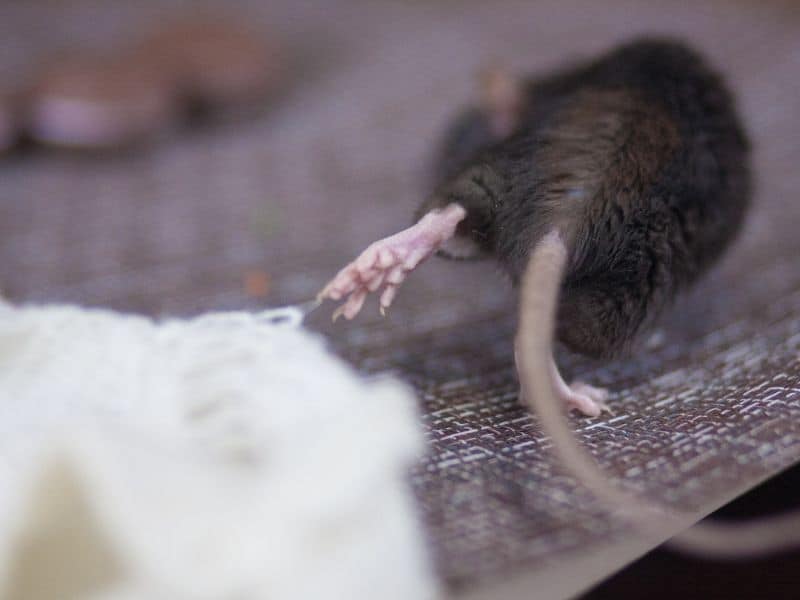
Species eating the same species, or cannibalism is quite common in the animal kingdom.
Primarily, animals eat their own kind for sustenance. Some mother animals eat their sick or dead newborns.
By the way, while rats will eat mice from time to time, mice will also eat rats.
However, it is more likely for mice to eat rats only when they are extremely hungry and available rats are already dead.
Just Before You Go
Rats and mice can get along. However, in some instances, rats may eat mice — and vice versa!
If there is plenty of food for both types of rodents to eat, they will leave each other alone.
Besides, they tend to nest in different places. Rats prefer to stay outdoors (although they may try to look for food indoors), while mice prefer to live indoors.
While rats and mice can live harmoniously, not a lot of people are willing to live with them, except for those who find rats and mice too cute and choose to make pets out of them.
However, this doesn’t take away the fact that you can get diseases from rats and mice. If there is a rat or mouse infestation, get in touch with a reliable local pest control company.
But if you plan to take care of either rats or mice, make sure that you buy them from a reliable pet shop in your area.
Medical Disclaimer: TheHomePestControl is a digital publisher and does not offer personal health or medical advice. The contents of this website are not intended to substitute for professional medical advice, diagnosis, or treatment.
Affiliate Disclaimer: As an Amazon Associate, I earn from qualifying purchases made on our website. If you make a purchase through links from this website, I may earn a commission at no additional cost to you.

